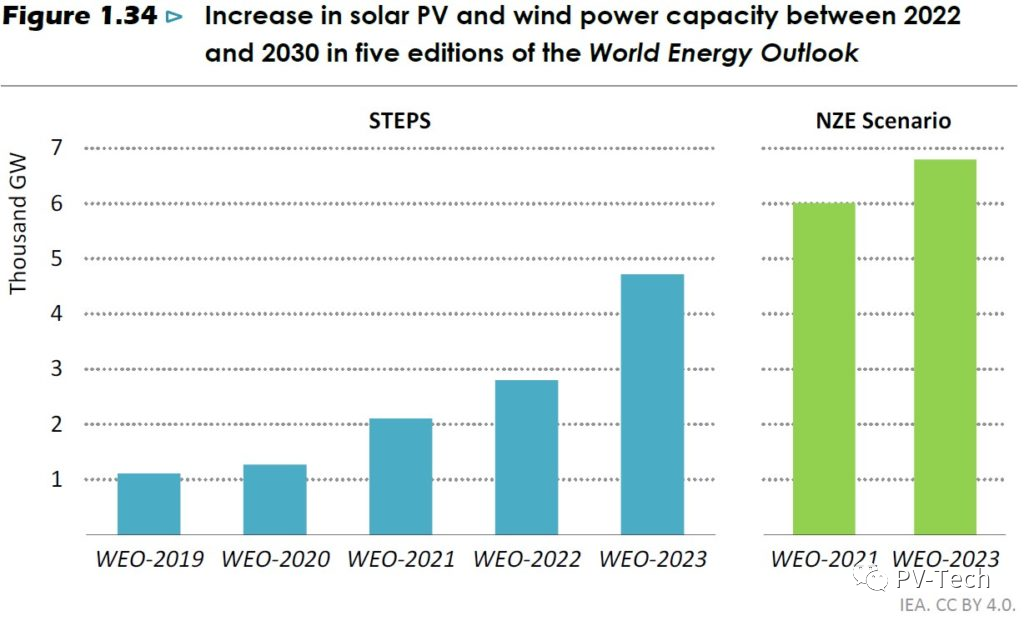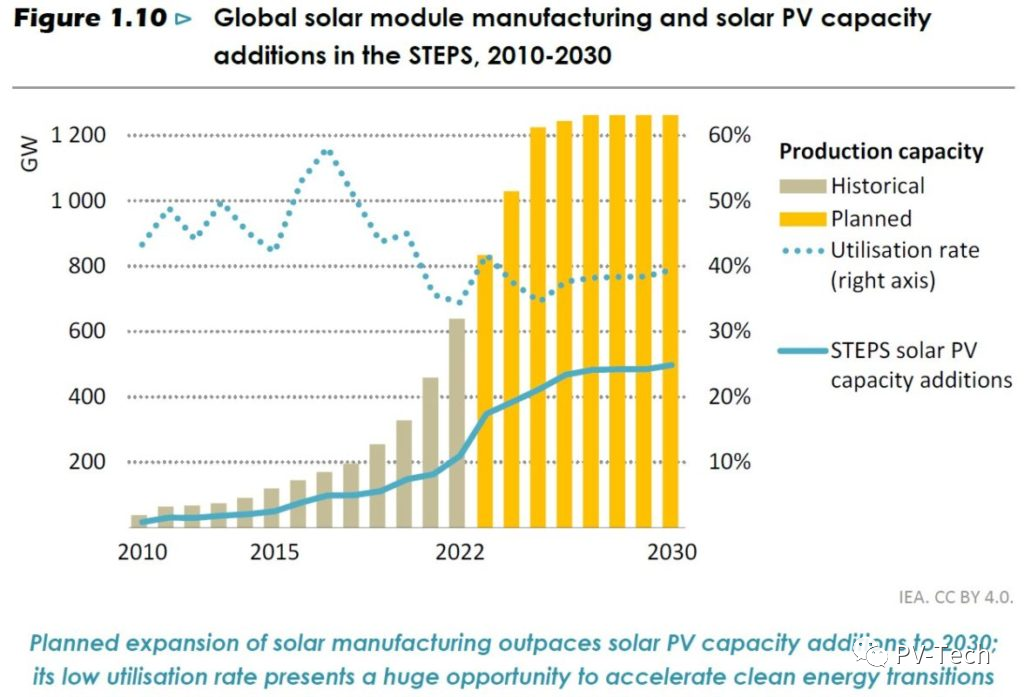The International Energy Agency (IEA) stated that in the Stated Policy Scenario (STEPS), renewable energy will account for 80% of new power capacity in 2030, of which solar photovoltaic power generation alone will account for more than half.
In its landmark report "World Energy Outlook", the IEA predicts that by the end of this decade, the annual nominal solar module production capacity will exceed 1.2TW, but in STEPS, only 500GW of solar energy will be developed globally by 2030, less than 1.2TW. Half of the nominal 1.2TW module capacity available for development.

STEPS represents a development path based on the energy and climate measures governments have taken to date and the policies they are formulating, thereby providing a more conservative benchmark.
In 2023 alone, EIA predicts that the world's new renewable energy power capacity will exceed 500GW, and funds used for solar energy development will reach as high as US$1 billion every day.
Measures such as expanding and consolidating the grid and adding energy storage capacity will allow solar PV to be more integrated into the electricity system.
Production capacity will reach 1.2TW in 2030
Most production capacity will remain highly concentrated, and China's expansion plans will far exceed those of other countries. By far, China is the largest producer, accounting for 80% of the world's production capacity.
Annual nominal solar module production capacity is expected to reach 1.2TW by the end of this decade, and using 70% of this would enable solar PV development to reach the levels projected in the Net Zero Emissions (NZE) scenario. This scenario limits global temperature rise to 1.5°C, further reducing fossil fuel use.

According to STEPS forecasts, the addition of 800 GW of solar photovoltaic capacity per year will reduce China's coal-fired power generation by 20% by 2030, and by 2030, Latin America, Africa, Southeast Asia and the Middle East will add 800 GW of solar photovoltaic capacity each year on average. 70GW solar photovoltaic capacity.
"Solar PV alone will not put the world on track to meet climate goals, but it can light the way forward more than any other clean technology," the report states.
By 2030, China's newly installed solar photovoltaic and offshore wind power capacity will be three times that of the "2021 World Energy Outlook". The Asian country is already a leader in clean energy growth, accounting for nearly half of the world's new installed solar photovoltaic and wind power capacity in 2022.
However, emerging and developing economies must join China in accelerating the pace of new renewable energy projects. To meet the requirements of the net-zero emissions scenario, investment in the energy transition will increase fivefold by 2030.
Energy demand growth remains very strong in most emerging and developing economies, and achieving cleaner electricity is key to achieving their energy and climate goals. In Indonesia, for example, the share of renewable energy in electricity generation will double to more than 35% by 2030, while in sub-Saharan Africa, meeting diversified national energy and climate goals means that by 2030, 85% of new power plants will be based on renewable energy.